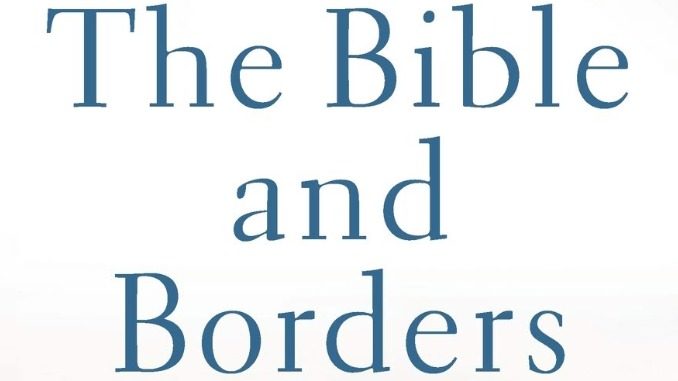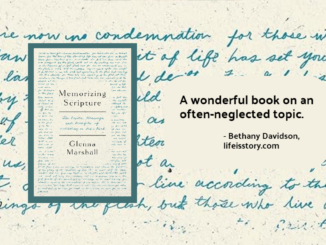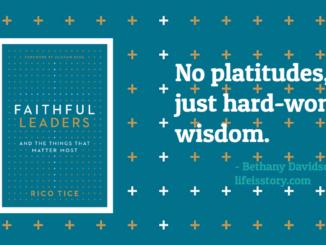
Published by Brazos Press on May 2020
Genres: Academic
Buy on Amazon
Goodreads

With so many people around the globe migrating, how should Christians and the church respond? Leading Latino-American biblical scholar M. Daniel Carroll R. (Rodas) helps readers understand what the Bible says about immigration, offering accessible, nuanced, and sympathetic guidance for the church.
After two successful editions of Christians at the Border, and having talked and written about immigration over the past decade, Carroll has sharpened his focus and refined his argument to make sure we hear clearly what the Bible says about one of the most pressing issues of our day. He has reworked the biblical material, adding insights and broadening the frame of reference beyond the US. As Carroll explores the surprising amount of material in the Old and New Testaments that deals with migration, he shows how this topic is fundamental to the message of the Bible and how it affects our understanding of God and the mission of the church.
I’ll never forget the evening that my family volunteered to drive just-released refugees to the airport. Our local county jail in Oklahoma was being leased as an ICE detainment center. Asylum seekers were detained at the border and shipped inland to a jail to await processing. Once released, they could go wherever until their court date to determine acceptance or denial of their refugee status.
A group of us gathered to collect the released refugees and help them with their next steps in a long journey. I memorized one specific Spanish phrase, “Lamento haberte hecho esto.” I’m sorry we did this to you. They were released one by one. We provided them with food, water, shoelaces. Carlos (not his real name) had lost forty pounds while in detention and clutched at his now-oversized cargo shorts. I gave him my belt. He sat in the grass and entertained my one-year-old as we waited. He had come here knowing this would happen to him. It wasn’t good. It wasn’t right. But it was better than home, where the drug cartels had terrorized his family.
We got home after 1am, physically and emotionally exhausted, but safe in our own home. More than my new friends could say. I had known of the immigration and refugee issues in the US for some time at that point—it’s what drew me to the detention center in the middle of the night—but I’d never experienced it up close before, human face to human face. And it brought all of what I felt convicted of in the abstract crashing into reality. I wasn’t just advocating for policy positions; I was advocating for people.
I begin with this story because the strength of The Bible and Borders is that it never loses focus on the humans involved in the discussion of immigration. M. Daniel Carroll R. works chronologically through Scripture to discuss immigration, migration, and assimilation, but he begins—as does Scripture—with mankind being made in the image of God.
Because immigrants are made in the divine image, they have an essential value and possess immense potential to contribute to society and to the common good through their presence and work.
Carroll breaks down his book into three parts: OT narrative, OT law, and New Testament. For each section, he discussion analogies, parallels, and applications to the present day—in both moral and legislative settings. Part one serves to establish the connection between modern-day immigrants and the ancient sojourners of Scripture. Particularly, in the Genesis narrative, Carroll helps readers change the typical perspective of the NT believer as “sons of Abraham” to our establishment as Egypt. Israel and his family are the immigrants. Egypt is the welcoming nation. On that foundation, one can build a robust discussion of immigration, nationalism, xenophobia, assimilation, and more.
Part two delves into Old Testament law, with all the equal emphasis on the citizen’s requirement to care for the foreigner and the foreigner’s requirement to participate in the community. Carroll also delineates the Hebrew words used of foreigners and spends time parsing out their meaning. I wish he had been more thorough in this section, but the discussion is befitting a work of this length.
Part three turns to the New Testament and establishment of the whole Christian community as “resident aliens.” Carroll suggests that NT believers have taken this term only in its metaphorical sense—such as in Hauerwas or Brueggemann—but not focused on its literal sense in our national treatment of immigrants.
Carroll then concludes with a discussion of Romans 13 and illegal immigration. He reminds us that Paul’s letter must be read in context. Read Romans 12 first! This is where Christians are exhorted to not be molded by the pattern of this world—including, one would imagine, political ideologies. Instead, Christians must have their minds renewed through Christ to know the will of God. He calls Christians to discerning submission, not blind obedience, and suggests Christians ought to work for ways to alleviate the suffering of our undocumented brothers and sisters.
The Bible and Borders is clear, concise, and methodical. There’s no flowery language or hyperbole. Carroll is calm and straightforward. He presents the facts as they are, acknowledges the complexity of application in modern times, but urges us on anyway, reminding us that it is the well-being of people made in the image of God that is at stake.
Although it’s never controversial or contentious, by the end of the book, The Bible and Borders presents readers with a pretty real choice: either love the immigrant or risk dishonoring the God who made them in his image.



